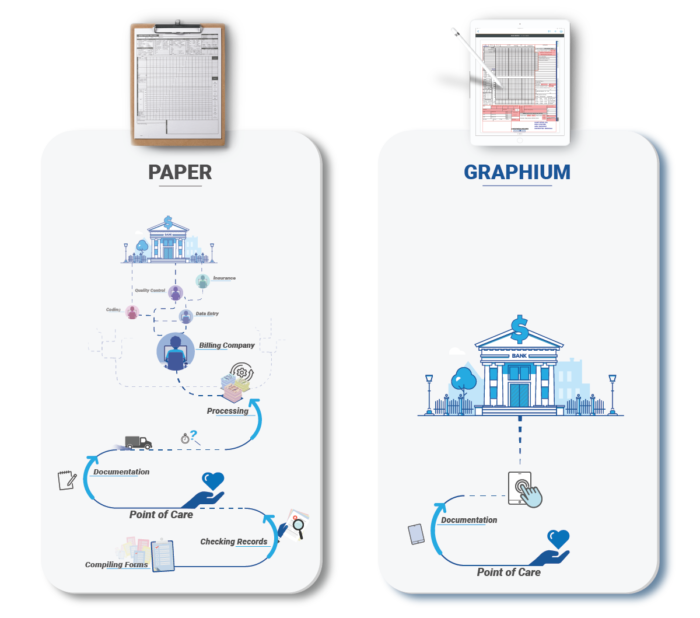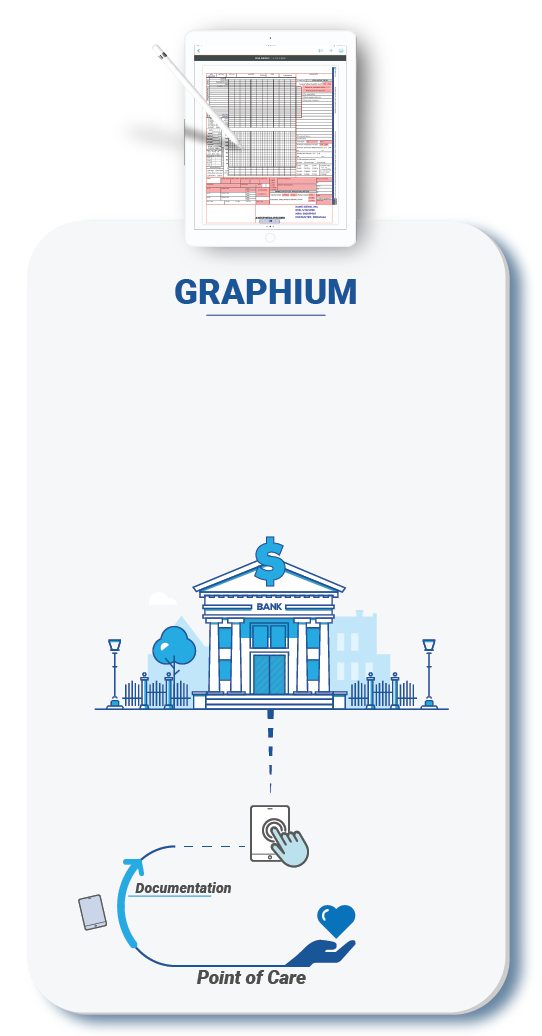
What’s so wrong with paper?
Although we’ve moved into the digital age, paper records remain the most popular reporting tool among anesthesia providers — and for some very good reasons:
Paper is familiar.
Many anesthesia providers have been using the same paper record, with minimal changes, for years. Muscle memory kicks in. They know where each piece of data goes, and the record fits their workflow like the perfect glove.
Paper is quick.
The anesthesiologist grabs her paper record, clicks her pen, and she is “booted up.” She writes what she needs to write, she signs what she needs to sign. What is there to slow her down?
Paper is flexible.
Sure, the lines are printed on the page, and those can’t really be moved. But a CRNA can write whatever he needs, wherever he wants. No extra clicks – he just writes. And mobility? He just sets the clipboard down wherever he needs to and picks the record back up when he can. No need to disrupt diligent patient care for the sake of paperwork.
Ripping on paper…
Obviously, paper has some very distinct advantages. But, paper processes also have inherent problems.
 Paper is complex.
Paper is complex.
That one sheet of paper contains a lot of data, which needs to be shared to multiple locations. The result? Multi-colored carbon copies that are increasingly illegible, delivered to different places or perhaps scanning and uploading to an EHR. Copies need to get to the pharmacy, the billing company, the patient chart, and possibly other places. Who’s going to handle that? Nurses? The anesthesia provider? Couriers? At what cost, and at whose liability?
Paper is clunky.
Is your record complete? You think so until it gets “dinged” for a missing piece of data. Every ding means a hiccup on the way to billing, which means delayed payment at best, or rejected claims at worst. And maybe the data is there, but your handwriting wasn’t…perfect. Illegibility is a HUGE issue for providers using handwritten paper records. And even when legible, the likelihood of discrepancies due to data entry (transposition, typos, etc.) and the subsequent liability and cost of such mistakes can be insurmountable.
Paper is rigid.
If a paper form needs to be updated, how many boxes of forms do we need to completely discard? And how much is the cost to reprint and redistribute? And, if MACRA rules keep changing, and admin needs different data captured periodically, how often do we need to go through that process?
The Graphium Advantage
So, as Graphium Health approached the development of technology for the anesthesia space, we wanted to maintain the strengths of the paper record while eliminating its weaknesses.
The Familiarity of Paper Without its Complexity
Graphium’s user interface is designed to look and feel like the paper record with which anesthesia providers are already familiar. Data is recorded in similar areas and with similar methods – even employing the Apple Pencil for the pen-and-paper experience that providers are used to. But with the powerful technology behind the digital record, you no longer have the need for carbon copies, couriers, or the mistakes, delays — and, ultimately, cost — that come with the paper process. We’ll integrate with your host EHR and your billing company to ensure that your paper record arrives when and where it’s supposed to.
The Speed of Paper Without its Clunkiness
With a quick 4-digit pin, built-in templates, and quick-sets (e.g. just press “today” to fill in today’s date and time, patient age, and surgery timeline), Graphium keeps you moving as quickly as (if not quicker than) your current paper record. That speed also continues throughout the process as Graphium helps you eliminate incomplete or erroneous records through color-coded data validators that show you in real-time what you may be missing. Eliminating errors means eliminating dings, which means quicker reimbursement and, more importantly, the ability to focus on patient care rather than correcting records.
The Flexibility of Paper Without its Rigidity
The Graphium Health development team has worked hard to provide the best balance of discrete data entry and handwriting (yes, you can free-form handwrite on our records just like paper!) to keep you moving through your workflow exactly how you always have. The iPad experience keeps you just as mobile as your clipboard, and the built-in “stops” allow you to jump from your current record to a more emergent case that may be occurring in the next OR. And if your form needs to change? We make this process a breeze without the need to destroy and reprint a ton of blank records. Unlike many companies, Graphium prides itself on turning form changes around quickly. You should never be waiting on minor adjustments to make your EMR experience exactly what it needs to be.
The best of both worlds: that’s exactly what Graphium Health has been aiming for, and we believe that you’ll enjoy the experience. But don’t just take our word for it. We would love to show you and your team a live, online demonstration of the Graphium EMR. Click below to schedule your own demo!

